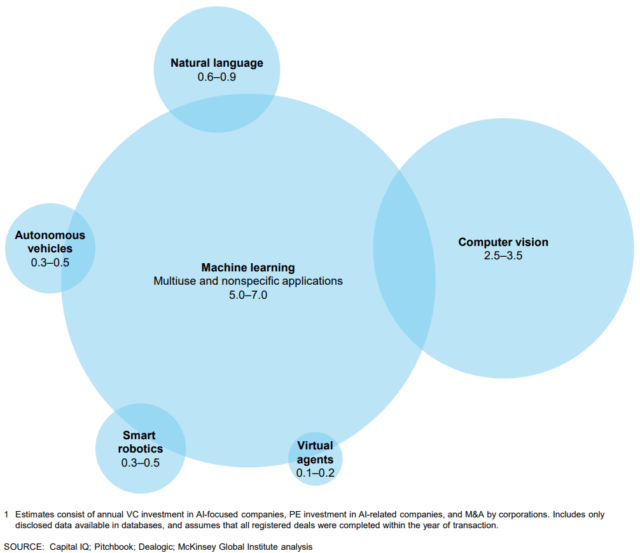You’re in danger…
Of being left behind. Many people find a routine, then they settle in. But business trends are accelerating. It seems technology is advancing at an even faster rate than we expected. Many of us are already feeling the effects of these changes.
We’re expected to do far more than our predecessors.
We’re expected to be more knowledgeable. To be able to turn out high quality work in less time and with less money. Those who are unprepared will struggle. Work will become difficult as they struggle to compete with their competent co-workers.
Work will be unrecognizable…
If you’re unprepared.
Even worse, these changes are more complicated than many of us realize. It’s not just keeping up with trends that’s difficult. It’s keeping up with the right trends.
Okay…
Which trends do you keep up with? Are you relying on something that no longer works? How will these trends affect your career? Which ones will move your career forward? If you’re conscientious or ambitious, these questions are a struggle to answer.
Because the answer is different for each of us.
It’s a personal question. If it’s answered correctly, it includes your desires, goals, fears, frustrations and experiences. It’s something that only you can answer. And the stakes have never been higher.
So where do you start?
You start with the changes taking place. Making the right decision is easier when you’re aware of what’s happening around you. With that in mind, let’s take a look at the top business trends for 2018.
1. The arrival of Augmented Intelligence
Not just artificial intelligence, but augmented intelligence, man + machine, is here. The use of AI to augment our performance is being implemented across a variety of industries. These changes are subtle but they’re taking hold as the pressure to over perform at work grows.
- Automotive: Assembly line workers are relying on AI powered software and robotics to keep up with the overwhelming demand. These changes have made advanced cars more affordable to the average consumer.
- Airlines: Let’s say your flight is going to be delayed. IBM’s Watson notifies flight attendants automatically. Watson lets them know which passengers are going to miss their connecting flight. Watson then provides attendants with instructions. Where to go when they land, alternate connecting flights and more.
- Marketing: Amazon is using AI to augment worker productivity. One area that’s received a significant amount of attention is marketing. Amazon uses AI to regulate dynamic pricing. They use it to change product descriptions. To alter product rankings based on a variety of factors. Amazon uses your spending habits to determine the price you’ll pay. Loyal customers pay more, infrequent or irregular customers pay less.
- Warehousing: Robotics company Symbiotic is working to augment and automate the grocery distribution business. Blue chip brands like Amazon and Lego have already used AI and robotics to augment or in some cases, completely automate their warehouses.
Augmented intelligence is, for many industries, a fundamental part of work. Instead of replacing productive workers, technology at this stage is being used to amplify performance. Expect these trends to continue until…
2. Artificial Intelligence moves to the mainstream
Artificial intelligence has been democratized. Microsoft announced that AI is already present in the half a billion devices running Windows 10. Google has released TensorFlow. Berkeley AI research released Caffe and Apache released Apache MXNEt. Amazon created an AI friendly platform for developers to work with a variety of AI specific frameworks and services.
What does this tell us about artificial intelligence?
It’s quickly becoming a mainstream obsession. Here’s what’s interesting about these changes. These large companies aren’t simply creating a few one-off products with AI. They’re quietly integrating it into every part of their organization, with both internal and external applications.
As it turns out, this is good news, for now.
AI is still in its infancy so job loss for most people is negligible. And it’s likely to stay that way for at least the next decade. That’s good news for most people because it means they won’t be replaced, at least until…
3. Automation achieves dramatic growth
Budweiser has just made history. They’ve just delivered beer. Big deal. Isn’t that something they do every day? Absolutely. Their drivers make deliveries to stores on a daily basis. So what makes this particular delivery special or noteworthy?
Otto and Budweiser teamed up to make the world’s first autonomous truck delivery.
The truck, outfitted with $30,000 dollars of hardware and software, drove 120 miles from Fort Collins to Colorado Springs. This is a game changer for the trucking industry, which hauls 70 percent of America’s freight.
Why?
There simply aren’t enough drivers. In 2017 the American Trucking Association listed the deficit at 50,000 drivers. That number is set to grow to 175,000 drivers by 2024.
Automation’s rise to prominence is fueled by massive spending and the rapid growth in specific areas.

Automation, driven by AI and advanced hardware, is set to disrupt work as we know it. We’re automating traditional jobs out of existence on a daily basis.
• Pizza Hut replaced waiters with robots to take orders and process payments.
• Walmart used automation to replace 7,000 accounting and invoicing employees.
• iPhone maker Foxconn replaced 60,000 employees with robots.
• Wendy’s replaced their lowest paid employees with robots.
White collar, blue collar, it really doesn’t matter.
As automation matures work will shift from Augmented Intelligence to true Artificial Intelligence. No one knows for sure when AI will reach that tipping point but every industry will be impacted.
Marketing is safe though. It’s not so routine that it can be duplicated by AI, right?
Not so fast.
HubSpot shared a list of creative, development and marketing roles threatened by AI. Sifting through data, making predictions and recommendations. Creating compelling headlines and email subject lines. Providing you with AI-based analysis and reporting.
These advances are all happening now.
These changes are all leading to an unexpected outcome.
4. The end of quality, the rise of the experience economy
Let me tell you about the Museum of Ice Cream. No, it’s not about the history of ice cream. Or for you to learn how it’s made. It’s to let people play. Specifically to let adults throw sprinkles on one another. And there are lines around the block.
Customers crave experiences. That’s why the Museum of Ice Cream exists. Not to tell you the history of ice cream, but to experience what it’s like to playfully live like ice cream? Or something like that.
With Total Quality Management (TQM) organizations were able to win customers over with consistent product quality. The more consistent your product quality, the more loyal your customers were.
Not anymore.
Today it’s all about the experience economy. Customers are far more willing to spend money on concerts, dinner dates, and trips. That’s the problem with the experience economy. Organizations are still trying to build their business the old way.
It isn’t working.
Customers want to experience an emotional connection. They’re looking for organizations with shared values. And more importantly, they want your organization to speak to their reason and their emotions.
They want a story.
Research shows emotion drives attention. We pay a lot of attention to the things we find threatening and, to a lesser extent, rewarding. Today customers place a premium on experiences. What they’re really looking for though, is meaning.
Storytelling, events and experiences. These are the mechanisms they use to find meaning.
What does that look like?
See how Nike created a story to sell the experience?
Here’s the amazing thing about Nike’s 2 minute ad. It resonated with customers deeply. How do I know? Customers are searching for it, on YouTube, on their own. Nike’s ad hits all of the right spots with their target audience.
This is what customers expect today.
People want companies to provide a consistently wonderful experience from beginning to end. The good news is, if the experience and values are there, customers are willing to spend more.
Does this mean quality doesn’t matter?
Not at all. It means it’s the end of quality as a customer retention mechanism. It’s the beginning of authenticity. Customers are looking for companies that fit with who they are. They want to work with companies that support the values, causes and ideals they support.
Quality is a given.
It’s not something you’re rewarded or recognized for. It’s expected, but its an afterthought.
5. The brick and mortar apocalypse
What do Macy’s, Sears, J.C. Penny and RadioShack have in common? They’re all closing more than 100 stores. Sports Authority has closed their doors for good. Toys”R”Us has filed bankruptcy. More than 40 major brick and mortar brands have shut down, closed a large number of retail locations, or gone out of business completely.
Half of the 1,200 malls in the US will close by 2023.
Our economy is growing. Consumer confidence is high, unemployment is at a historic low. Bricks and mortar retailers should be growing. Retailers instead are dying out.
Why?
Massive retail debt. The rise of Amazon and online shopping. The shrinking middle class and the experience economy. These are all contributors to the retail apocalypse. And, according to Bloomberg, it’s only going to get worse.
These trends are accelerating as businesses struggle to adapt to the new paradigm.
6. Values over the bottom line
It’s November 2016. REI has made a dangerous decision.
They’ve decided to shut their business down on the busiest day of the year, on Black Friday. They shut their distribution centers, retail locations and headquarters down completely. They paid their employees to take the day off and spend it outside.
They called it #OptOutside.
Their campaign wasn’t a publicity stunt. REI put their money where their mouth is and customers rewarded them for it. They received 2.7 billion impressions on the first day alone. Social media mentions increased by 7,000 percent. REI reported a 9.3 percent increase in revenues, a 7 percent increase in comparable store sales and a 23 percent increase in digital sales.
Here’s the amazing part.
More than 150 businesses followed their lead, closing their doors on Black Friday. Hundreds of State Parks opened their gates to the public, for free.
REI spawned a movement. So they’re doing it again this year.
Is REI an anomaly?
Nope.
Black Friday is Patagonia’s biggest day of the year. Last year they expected to bring in $2 million via their website and retail locations. They decided to make a stand as well.
Patagonia promised to give 100 percent of their Black Friday sales to charity.
They made their announcement then almost immediately, they were flooded with sales. Patagonia brought in 10 million by the end of the day. Five times more than they expected. They donated all the money as promised, to grassroots environmental groups.
What’s driving this behavior?
Shared values.
It’s a trend that will only continue to grow.
The Meaningful Brands study, conducted by the Havas Group, interviewed 300,000 people worldwide. They analyzed 1,500 brands in 15 industries, across 33 countries.
Here’s what they found.
• Values are a significant driver of business
• People wouldn’t care if 74 percent of the brands they use just disappeared
• 84 percent of consumers expect brands to provide content.
• 60 percent of content produced by brands is declared as poor, irrelevant or failing to deliver
• 75 percent of us expect brands to make more of a contribution to our well being and quality of life, yet only 40 percent believe brands are doing so
• Less than 27 percent of the brands we use notably improve our quality of life and well being.
• Meaningful Brands have outperformed the stock market by a staggering 206 percent over a ten-year period between 2006 and 2016
• Meaningfulness in brand marketing can increase share of wallet by up to nine times
Shared values create relationships and loyalty.
Okay, what is a shared value?
“A shared value is a belief that both the brand and consumer have about a brand’s higher purpose or broad philosophy.”
Shared values have always been important to customers. The expectation and demand for these values continue to grow. Customers expect you to understand what matters most to them. Then, they expect you to use that data to capture their attention and improve their well being.
7. The frightful 5 monopoly
Most of us are addicts.
We’re addicted to the frightful five – Google, Amazon, Apple, Facebook and Microsoft. But we’re stuck.
In fact, everyone hates Facebook but we can’t seem to leave. Most of us love Amazon but we can’t seem to get away from them either. Apple customers proudly proclaim themselves as addicts.
Why?
They’ve created an ecosystem that’s filled with your friends, family and favorites. They’ve created a business model around two specific ingredients.
There are two types of customer relationships.
1. Constrained relationships = I have to stay in this relationship
2. Dedicated relationships = I want to stay in this relationship
Constrained relationships use pain to keep us connected. Regret avoidance, loss aversion and a desire for control keep us locked in. Dedicated relationships rely on shared values, benevolence, integrity and competence. The intangible details motivate us to stay.
Look for the frightful five to embed themselves deeper with these cues.
• Acquiring new companies and talent (e.g. Amazon’s Whole Foods purchase)
• Creating new products and services (e.g. iPhone X, Google Home Mini)
• Product updates (e.g. Microsoft Teams)
Why is this important?
Organizations that are positioned well, will benefit from these changes. Successful marketers will look to build on the growth of the big five, using their success to fuel their own.
What if this doesn’t happen?
It’s not a question of if it will happen, it’s a question of how fast. As we’ve seen, these changes are already happening. Customers are showing us what they want. Competitors are adapting rapidly. The AI/automation disruption has already started.
It’s not a question of when.
8. Blockchain everything.
Yes, this is Bitcoin but it’s more than that. It’s a completely different way of processing information and Bitcoin is just the tip of the iceberg. In essences, blockchain is a different way to process transactions or records. Like a shared document that can be recorded and remembered several different ways. Blockchain is emerging in healthcare as well as financial tech. And no matter the fate of Bitcoin as a currency, blockchain will be here to stay. This is an excellent primer about how blockchain works and its underlying technology.
It’s all about preparation. There’s still time to prepare if you accept what’s coming.
Most people will be left behind. They’ve found a routine that works. They’ve settled in. They don’t realize these trends are accelerating. They can’t see that we’re moving forward at a faster rate than we were last year.
So they’ll try to carry things on their own.
We’ll all be expected to accomplish more than our predecessors. If you’re unprepared the (wrong) answer is work harder. If you’re prepared for what’s coming you’ll realize the right answer is to augment your work.
You’re ahead of the pack.
Want to turn out higher quality work in less time using fewer resources? Focus on the right trends. Take the time to prepare and you’ll accomplish more than your predecessors, no danger necessary.




